The Dordogne is an amazing region of southern France, rich with culture and heritage.
It’s a land of countless attractions — medieval architecture, castles, stony bastide towns, prehistoric caves, and cliff-hanging villages covered in roses.
In this article, I’m focusing on my favorite thing about the Dordogne — it’s beautiful fairytale villages. I give you the low down on each one.
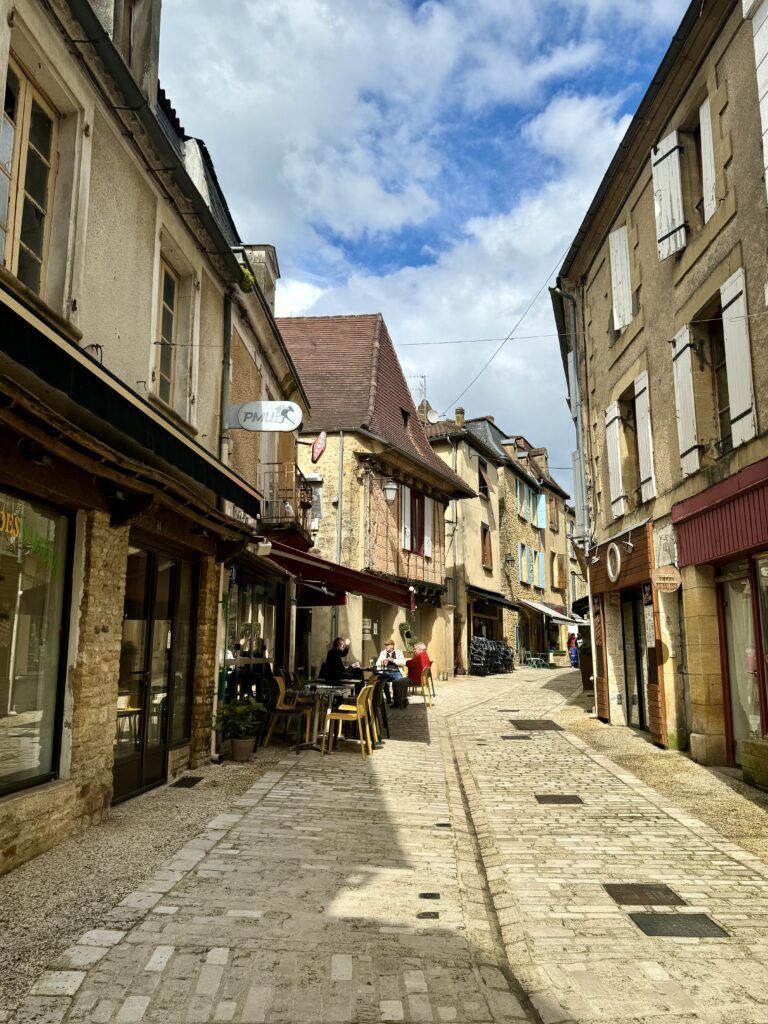
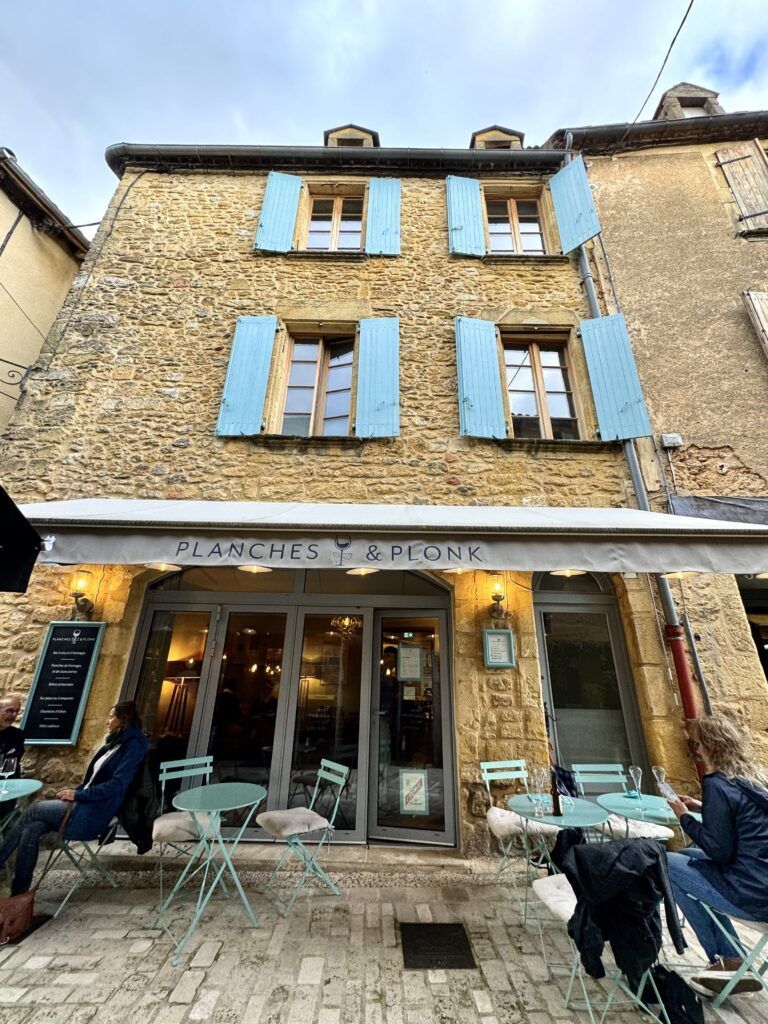
Beautiful Towns In The Dordogne
Belves
Belves means “beautiful view.” And the town certainly delivered on the score.
Belves is a medieval bastide village on a hill, making the list of the most beautiful in France.
Nicknamed the “pope’s village” it still has 7 bell towers dominating the setting and sepia toned architecture.
A walk through the streets of the village takes you back in time.

You’ll discover the 15th century market hall, Renaissance houses, and the remains of a Dominican convent and the square tower of the ancient castle.
If you want to see troglodyte dwellings, there are some beneath market square.
Belves has a market on Wednesday afternoon and Saturday morning. In the summer, there’s also a night market in the evening.
Pro Tip: For excellent wine and charcuterie, reserve in advance at Planches & Plonk!
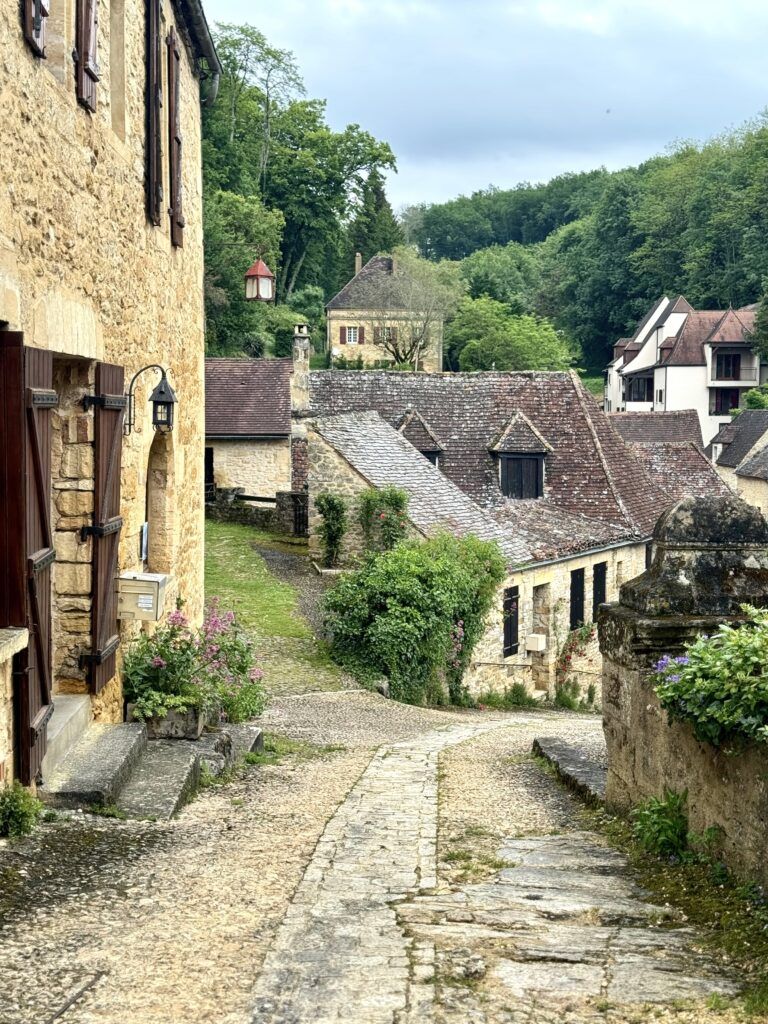
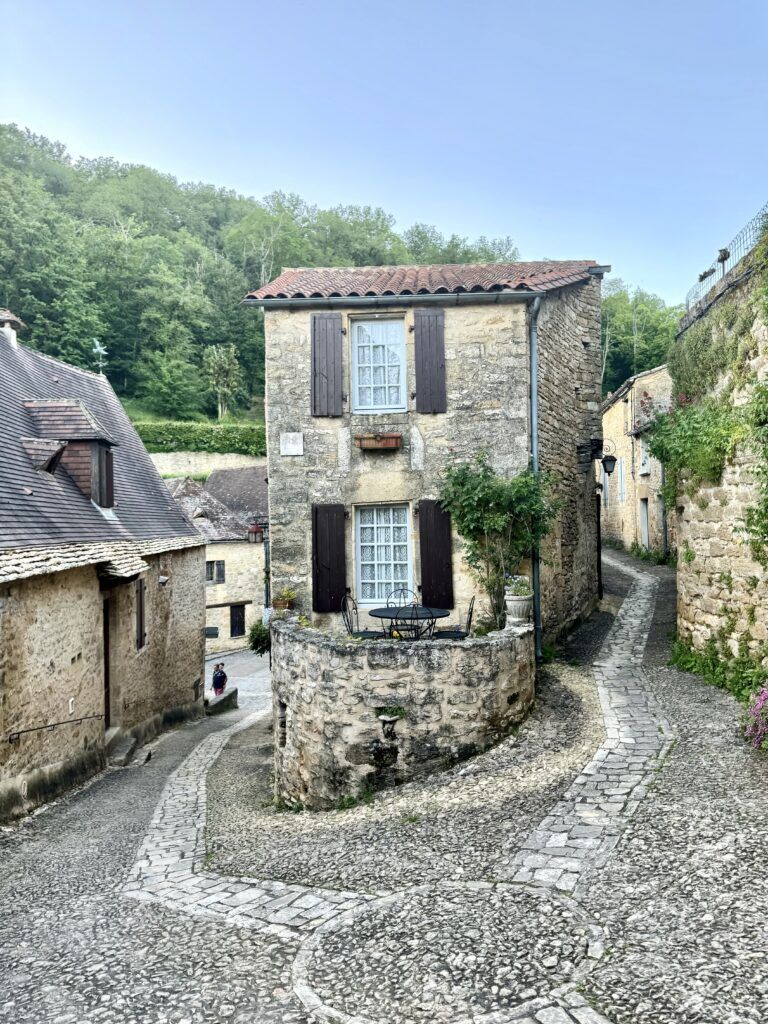
Beynac et Cazenac
Beynac is a stunning fairytale village. It’s practically vertical. Twisting lanes lead up to an ancient fortress perched on a limestone cliff.
The village was beloved by artists including Camille Pissarro. Today , it remains a creative hub with its many studios and artisan shops.
At the village’s summit sits the majestic Chateau de Beynac. It’s the Dordogne’s most formidable castle and visible from miles away.
This castle, once a key medieval barony, played a pivotal role in historic feuds, including those involving Richard the Lionheart.
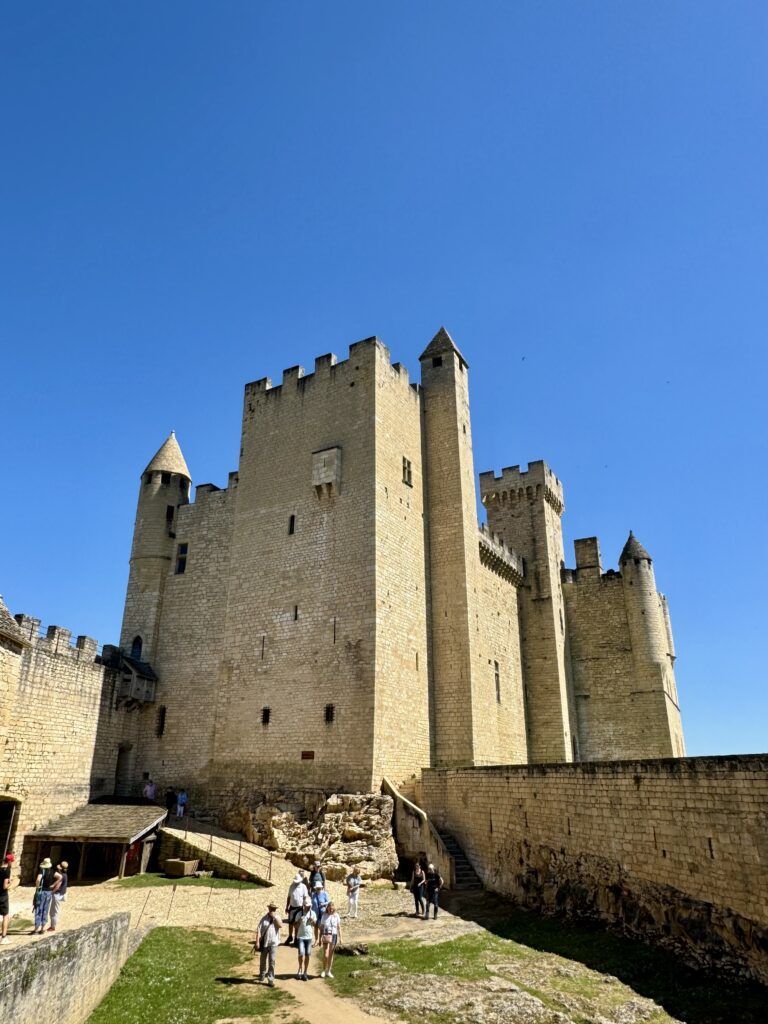
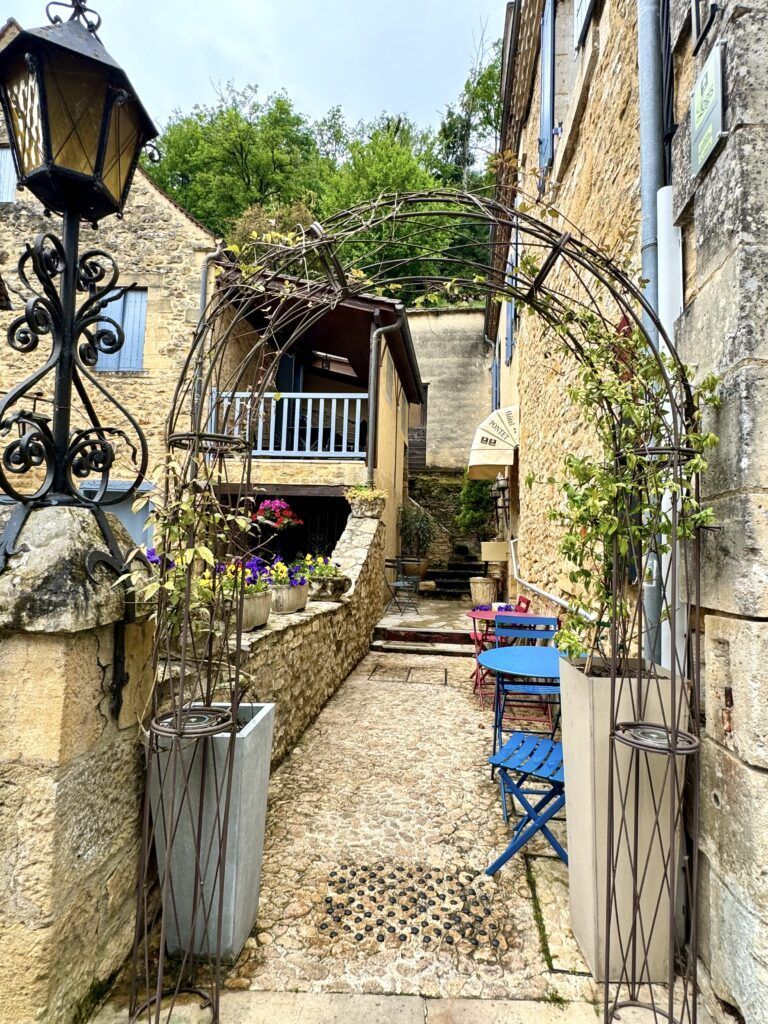
Visitors can reach the castle by a steep 20-minute walk or park just a minute away at the top.
Inside, the 13th century keep houses a great hall with vaulted ceilings, great halls, Richard the Lionheart’s bedroom, and a traditional kitchen.
The panoramic views from the castle terrace are breathtaking!
Beynac is also a launching point for boat trips up and down the Dordogne River in the traditional flat bottomed boasts.
The best place to eat in Beynac is La Petite Tonelle. Make reservations on Fork!

Brantome
The pretty town of Brantome sits on an island, encircled by a loop of the River Dronne. It’s often referred to as the “Venice of the Dordogne.”
Its buildings cluster around the 9th century Benedictine abbey, founded by Charlemagne. The bell tower dates from the 11th century, and is one of the oldest in France.
Located beneath the abbey is the Cave of the Last Judgment. It contains remarkable prehistoric paintings and a sculpture depicting the biblical event.
The town is dotted with ancient stone bridges and traditional water mills, some of which have been converted into restaurants and cafes.
Because of its river setting, Brantome is a good place for kayaking, canoeing, or leisurely boat tours.
If you’d like to see some chateaux in the area, check out the Cheateau de Bourdeilles and the Chateau de Puyguilhem.
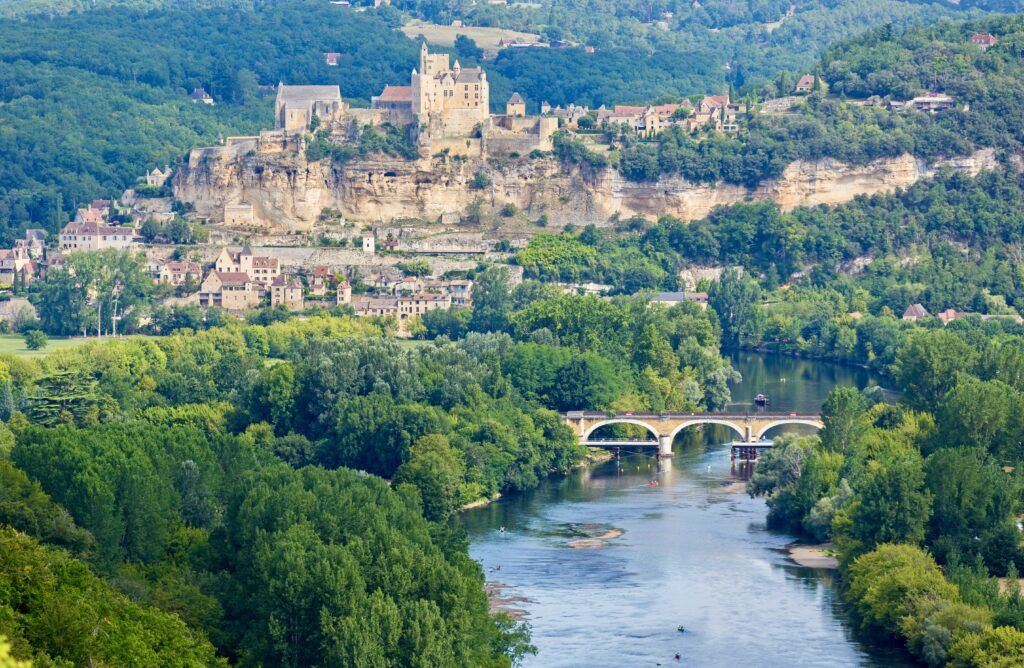
Castelnaud-la-Chapelle
Castelnaud-la-Chapelle overhangs the confluence of the Dordogne and Céou rivers. It offers a splendid panorama of its neighbouring villages Beynac-et-Cazenac and La Roque-Gageac.
This Dordogne village is famous for its two chateaux — the magnificently restored medieval castle and the Chateau des Milandes.
The castle is section only to Beynac, and it saw battles that decided the fate of nations. Today, visitors will love its authenticity, the war museus, and its quaint hilltop village.
You begin in the outer courtyard, head into the keep surrounded by a curtain wall, and admire the armor, weapons, and life size recreations of war machines in the artillery tower.
Chateau Milandes was the home of singer and dancer Josephine Baker. It’s a pretty place with Gothic and Renaissance architectural elements.
Pro Tip: I had a nice lunch at Le Tournepique, which has great castle views.

Domme
Domme is a splendid hilltop bastide town built in the 13th century. There are magnificent views of the Dordogne from the terrace near the upper square.
Streets are lined with honey-colored stone houses, many of which date back to the 13th and 14th centuries. There are plenty of shops selling local produce and a market every Thursday.
The Grotte du Jublié is at the top of the town, in the upper square. And you can zoom up to see the cave on a panoramic funicular.
The cave is famous for its natural rock formations. The stalactites on the ceiling are amazing!

Eymet
Eymet is a charming medieval village in the Dordogne. Founded in 1270 by Alphonse de Poitiers, the town boasts a rich history and well-preserved architecture.
As with most Bastide towns, it has a picturesque central square surrounded by half-timbered houses and arcades. The town’s vibrant expatriate community, particularly British, adds to its cosmopolitan feel.
Eymet’s lively weekly market, held every Thursday, is a major draw, offering local produce, crafts, and delicacies.
Visitors can explore the town’s historical sites, such as the Château d’Eymet and the 13th century church of Notre-Dame-de-l’Assomption.
Just south of Eymet is the pretty town of Issegiac, a Dordogne village that dates back to the Roman times. It’s known for its Sunday market and Gothic church.
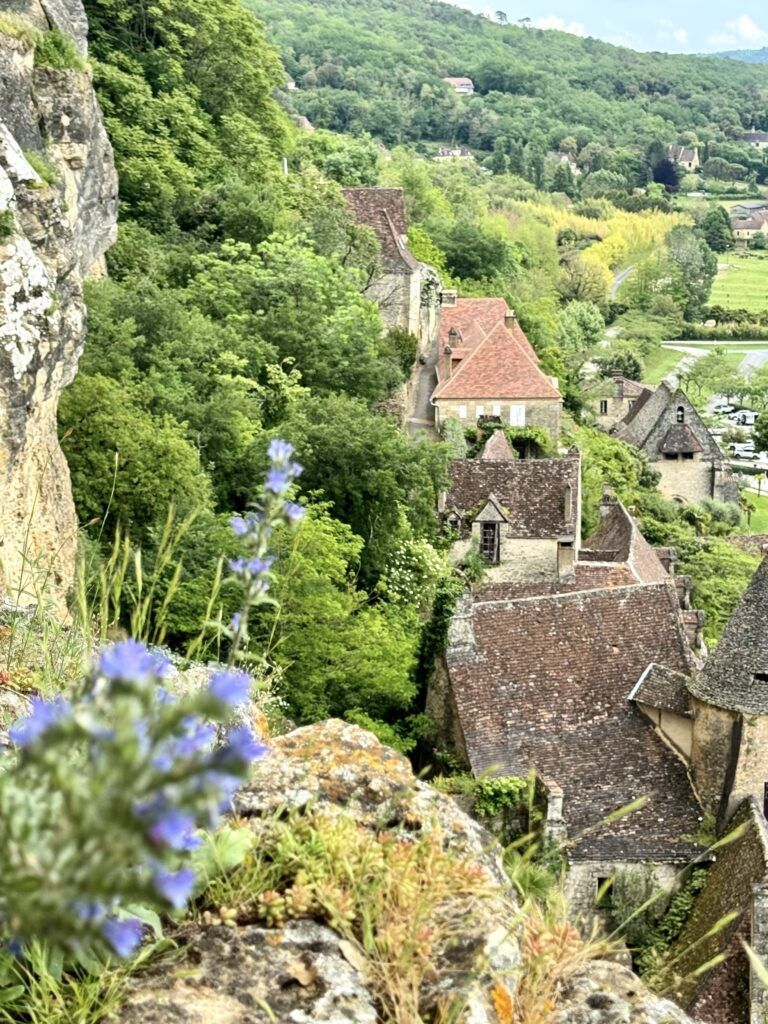

La Roque-Gageac
La Roque-Gageac is an exceedingly cute village in the Dordogne, with stone and ochre facades set into a cliff.
Honey-hued houses line the main road by the river. Narrow alleyways lead up to the foot of the cliff, from where you have a magnificent view over the river.
Along the way, there’s a church to pop into and a natural solarium, with exotic gardens overflowing with palms, banana plants, fig trees, cactus, bamboo …
You can also visit the Fort of the Middle Ages. It’s a troglodyte defensive space carved in the stone 40 meters above ground.
It’s a bit of a hike up on the escalier vertigineux. But it will take you back centuries and give you a view of the village below.
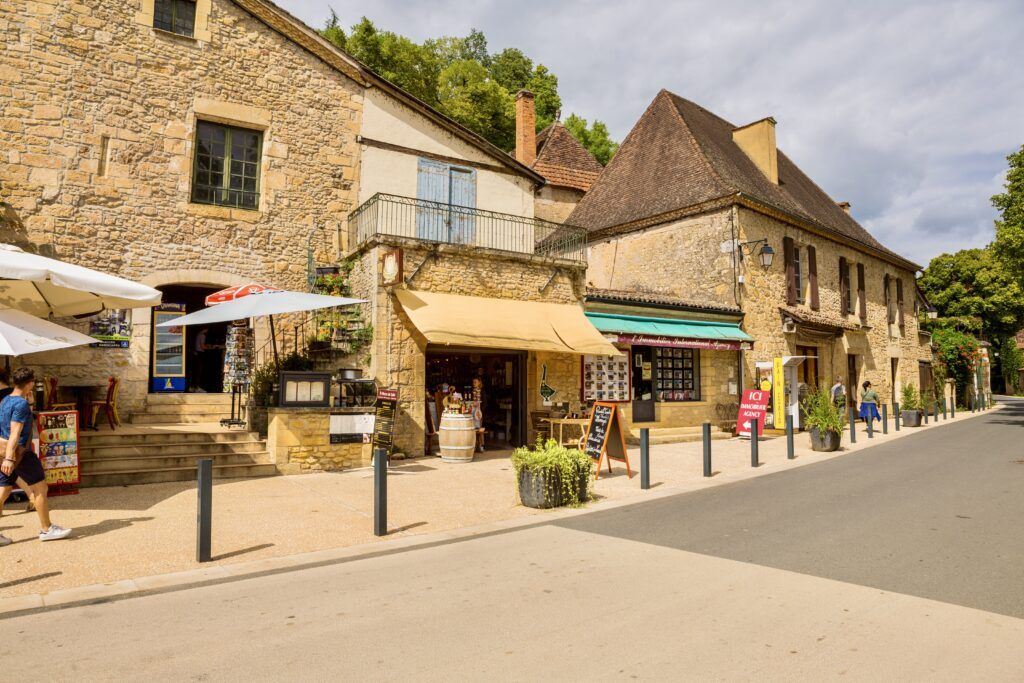
Limeuil
Limeuil is a ancient village that stands at the confluence of the Dordogne and the Vézère rivers, offering a perfect blend of natural beauty and historical charm.
One of the highlights of Limeuil is its pleasant riverside beach, where visitors can relax and enjoy the serene waters.
The village’s narrow, steep streets are very picturesque, winding their way up to the grounds of a chateau, two charming churches and an arboretum,.
Limeuil is also a haven for artisans and craftspeople. The town is filled with ateliers where you can watch skilled artisans at work and perhaps purchase unique handmade items.
Along the pedestrianized main drag, you’ll find a variety of cafes and eateries, perfect for savoring the local cuisine while soaking in the village’s vibrant atmosphere.

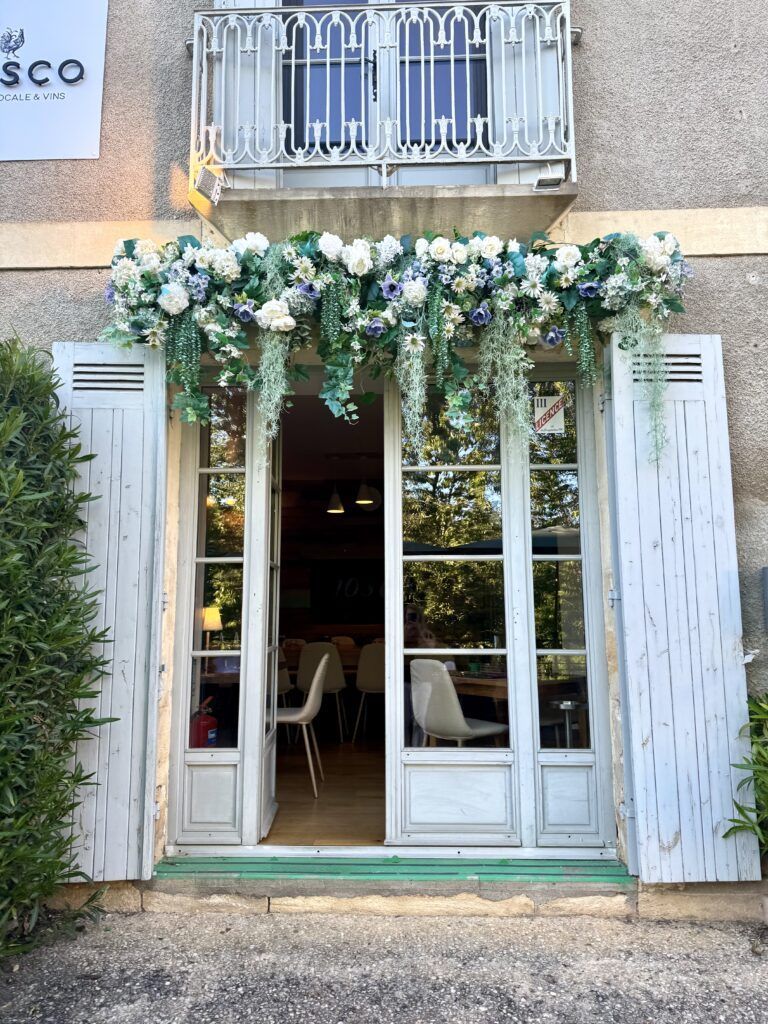
Les Eyzies-de-Tayac
Les Eyzies owes its fame to prehistoric discoveries made since the late 1800s, mostly caves high up in the cliffs.
There is a Museum or Prehistory in the town, which contains a wealth of important information about the history of the area.
On the outskirts of the town is one of the best preserved painted caves in Dordogne, the Font de Gaume.
You’ll need to make reservations online weeks or months in advance on the official website. Demand is high and there is only one English tour per day. Some visitors think this is a superior experience than the replica cave of Lascaux IV.
There are plenty of other caves for spelunkers as well — Grotte les Combarelles, Grotte due Grand Roc, Abri Pataud, and Grotte de Bernifal.
There are also some excellent restaurants in Les Eyzies. I can recommend La Maison, Nosco, and Le Bistro des Glycines.

Martel
Martel is a medieval town, once the seat of the Vicomte de Turenne. It’s technically in the Occitanie region, but can definitely be included in any Dordogne visit.
The town is known as the “Town of the Seven Towers.” It also boasts houses built of pale stone that contrasts with their reddish-brown roofs.
Its old fortified Gothic church has a bell tower, pierced with arrow slits. You can also see the remains of the old ramparts, a medieval palace, and the 18th century covered market.
The market is held twice a week on Wednesday and Saturday. In the winter, there’s a truffle market. On Wednesday nights, the town’s market square has live accordion music and dancing.
You can combine a visit with nearby caves, such as Gouffre de Padirac, or visit the beautiful village of Rocamadour.
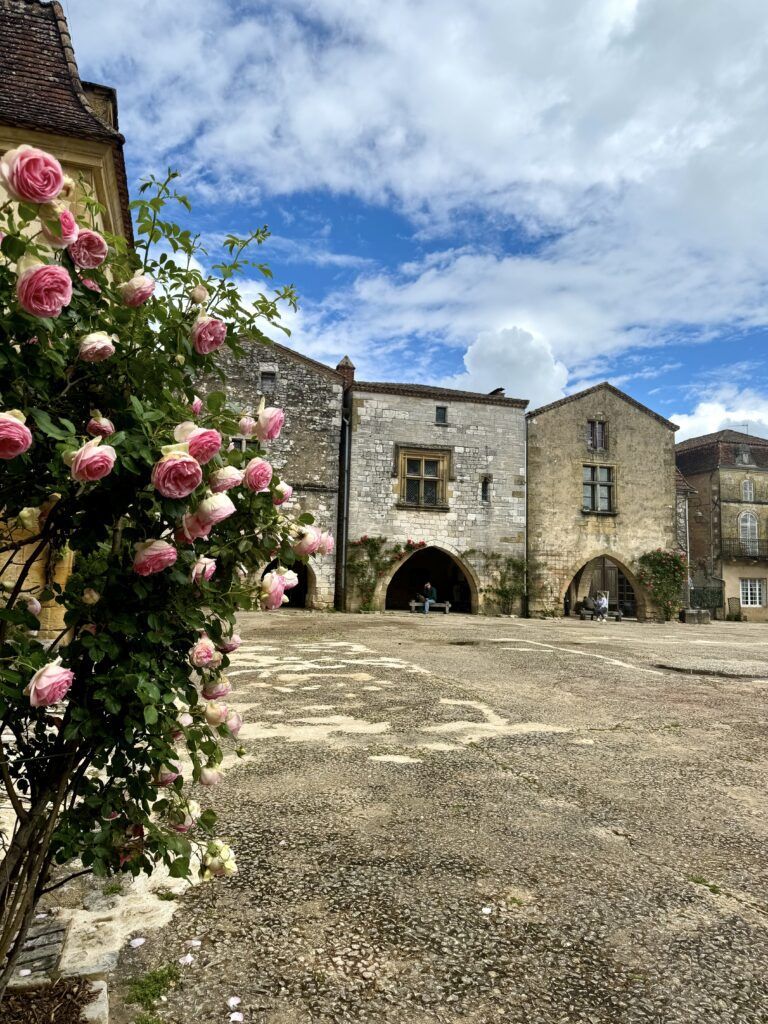
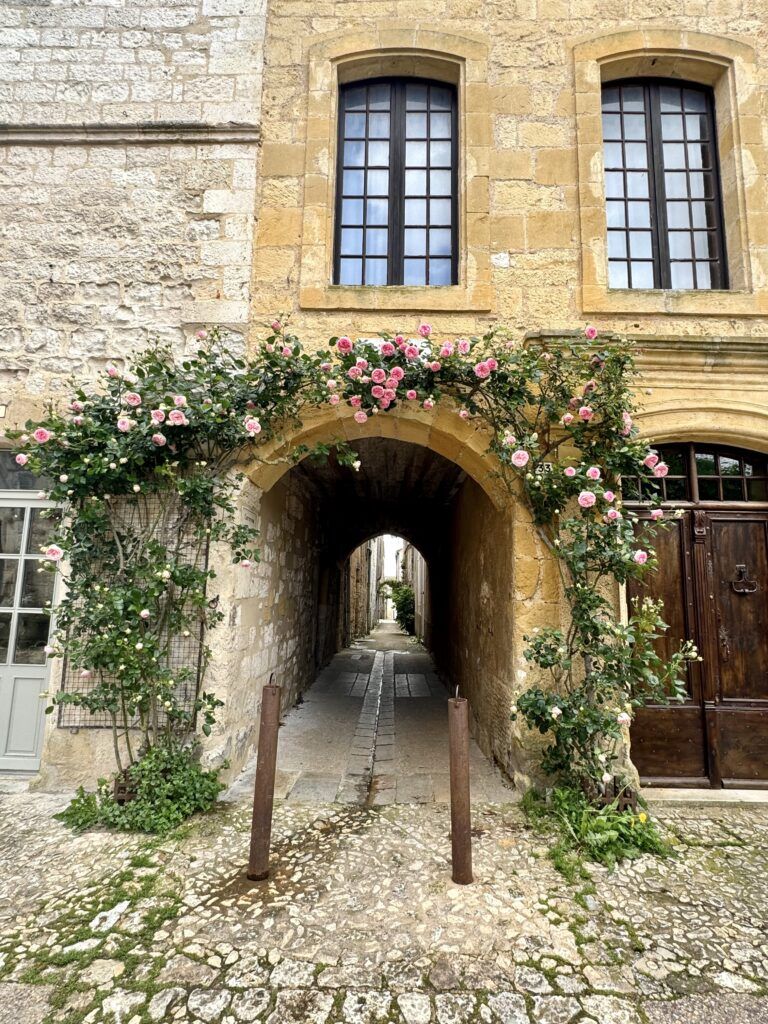
Monpazier
Classified as one of “the prettiest villages of France,” the bastide of Monpazier seduces visitors with exceptional charm and climbing roses.
Considered as the “model” bastide, it has a perfectly orthogonal layout, which was influenced by of the greatest architects of the day.
Stroll around its narrow streets and wander underneath its arcades. There are plenty of cute shops and eateries.
Try to arrive for the weekly market in the Place des Cornières, which has taken place on Thursdays for over 700 years!
If you are there in the evening, the best place to eat is Éléonore, a Micheline star restaurant.

Montignac Lascaux
Nestled on the banks of the Vezere River, Montignac consists of a group of ancient houses built at the foot of a tower.
They once formed part of a fortified castle belonging to the counts of Perigord. This peaceful town quickly became a busy tourist destination following the discovery of the elaborately painted prehistoric caves of Lascaux.
To protect these precious paintings, the original cave has been closed to the public for decades. Instead, you can visit the Lascaux IV Museum, which replicates 90% of the original cave.
You pay € 22 for the English tour, which you can purchase in advance on the official website. I loved it!
There’s a free parking lot to drop your car. You can also visit on a guided tour from Bordeaux or a guided tour from Sarlat.

Saint-Amand-la-Coly
Saint-Amand-de-Coly is another gorgeous village in the Dordogne’s crown.
This village is incredibly picturesque, with its ancient stone houses and narrow winding streets.
Central to its charm is the awe-inspiring abbey, a fortified 12th century structure that’s a testament to medieval architecture. Its grand nave stretches nearly 160 feet, supported by towering walls that reach up to 100 feet high.
Just a stone’s throw from Saint-Amand-de-Coly is the charming Château de la Grande Filolie. This 15th century castle, set in a picturesque park and lush woodlands, offers a glimpse into the past.
Nearby, the village of La Cassagne is equally enchanting, featuring a Roman-style church and a 15th-century presbytery.
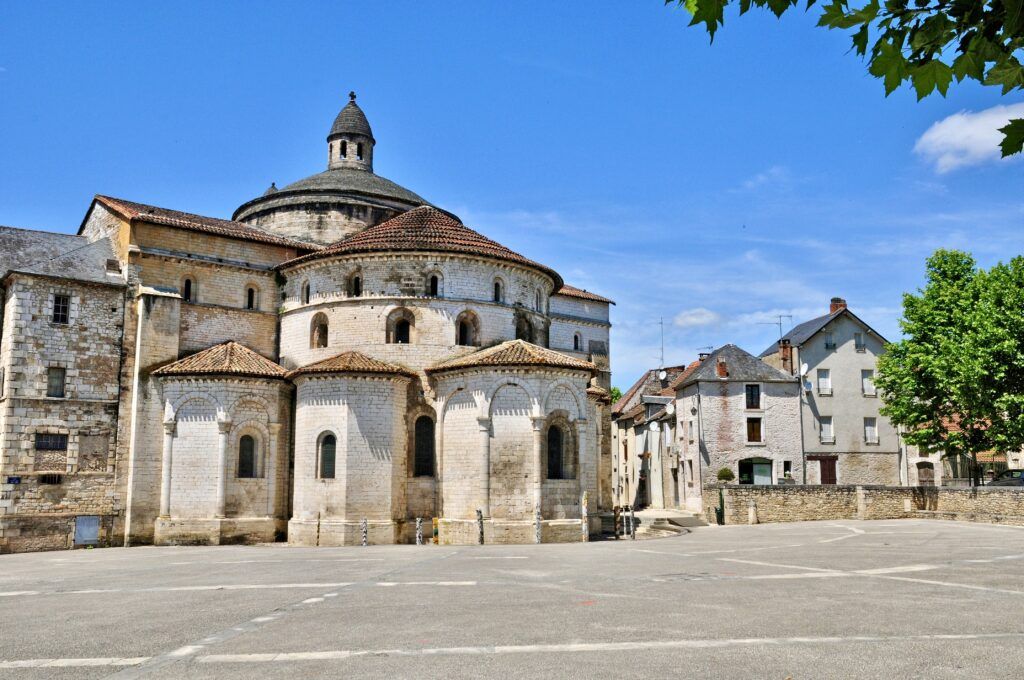
Souillac
The pretty village of Souilliac in the Dordogne lies between the Dordogne and Borreze.
The town grew up around a Benedictine monastery that was founded around 655 and became an abbey in the 16th century.
The town’s abbey church, the Abbey Sainte-Marie, dates from the Middle Ages. It was build in a Byzantine-Romanesque style, a bit like the Hagia Sophia in Istanbul.
The prettiest spots to explore are the Rue des Oules, Rye des Craquelin, and Place Roucou.

If you love caves, the Grottes de Lacave is not far afield, only 10 miles away. It was discovered in 1902.
You get there by riding and small train and taking a life. The, you can explore a mile worth of caverns with stalactites and stalagmites.
I hope you’ve enjoyed my guide to the most beautiful towns in the Dordogne. You may find these other travel guides useful:
- 10 day itinerary for southern France
- 1 week Dordogne itinerary
- Hidden gems in Provence
- Hilltop villages of the Luberon Valley
- Historic landmarks in southern France
- Beautiful villages in Occitanie
- One day in Avignon itinerary
- Guide to Arles
- Guide to Toulouse
- Guide to Carcassonne
- Guide to Albi
Pin it for later.



